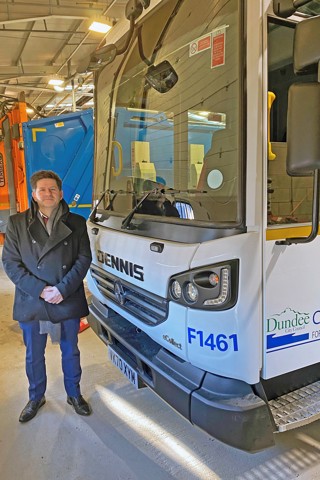Alberto de Monte, business director for EVs at Masternaut, a Michelin Group Company
Electric vehicles (EVs) are poised to become the dominant power on UK roads.
Overall, new vehicle registrations have rocketed to 10.7% in 2020, from just 1.1% in 2015.
The same is being seen for electric light commercial vehicles (e-LCVs), claiming a 64.4% increase in registrations in 2020 compared to 2019.
The UK Government's Road to Zero strategy will accelerate EV growth and give fleet managers a clear deadline to plan, implement and deliver transition.
The right insight, strategies and partners will give fleet managers the power to deliver the critical transformations their businesses need.
Understand fleet needs
Transition demands that a business knows where it’s starting from and three key steps will help establish this baseline.
First on the checklist is a comprehensive understanding of current fleet composition.
This can encompass factors such as maximum distance travelled on a daily basis and requirements in terms of vehicle size (i.e. load area and payload), to establish how the fleet is used and how it is likely to change.
Next, fleet managers can explore the electric options available, by comparing the range of the electric vehicle with the requirement for daily mileage.
Old certainties may change — favoured internal combustion-engine (ICE) vehicle suppliers, for example, might not offer the best electric alternatives.
Finally, cross reference vehicle requirements and electric model options with replacement schedules.
In so doing, fleet managers can develop an accurate electrification roadmap that encompasses business need, vehicle availability and renewal timings.
Regulatory penalties and rewards
Cost is often cited as a reason to delay electrification, but regulation may be about to tip the balance in favour of sooner rather than later.
Concern around air quality, for example, has seen a rapid expansion in Clean Air Zones (CAZs).
As restrictions similar to London’s Ultra Low Emission Zone (ULEZ) spread to cities across the UK, it’s likely that the financial penalties – or outright bans, as seen on the continent – for more polluting vehicles will increase significantly.
Regulation can offer rewards as well as penalties.
National and local government schemes offer incentives such as grants towards the purchase of EVs and charging infrastructure, as well as tax relief mechanisms such as Vehicle Excise Duty (VED) exemption.
Invest in infrastructure
Charging infrastructure remains a major issue as fleet managers explore public, in-house and home charging alternatives.
Public charge points are attractive because they involve zero upfront business infrastructure investment.
As of October, 2021, around 26,000 UK public charging points offered capacity for just over 45,000 vehicles charging simultaneously.
However, while the number of public charging points is growing, it’s clear that public infrastructure has a way to go before it fully meets business needs, particularly in terms of the share of fast and rapid chargers, as well as overall service level.
In-house charging capabilities offer pros and cons, too.
While they bring unrestricted access and lower ‘wholesale’ electricity costs, initial investment is likely to be high, particularly if the electricity infrastructure needs upgrading, and only works for vehicles that are returned to the depot at the end of every working day. This brings new challenges in terms of scheduling.
Home charging isn’t the cure-all, either.
Issues around how to reimburse drivers for the electricity, costs around the installation of charge points (and recovery if the driver leaves) and access to the vehicle (if the driver lives in a flat, for example) must be taken into consideration.
Not least is the very practical consideration that many of the larger vans that have launched recently, may not physically fit on your average driveway.
It’s hardly surprising then that many companies will adopt a hybrid approach that encompasses all three – along with vetting the needs of newer drivers — to offer their businesses and employees greater flexibility.
Help is at hand
It’s clear that fleet managers have a lot to consider — with much still unknown — as they transition to electric fleets.
The good news is that there is the time and support available to ensure electrification which delivers short, medium and long-term business value.
To find out more, download Masternaut’s electric vehicle transition guide.
























Login to comment
Comments
No comments have been made yet.